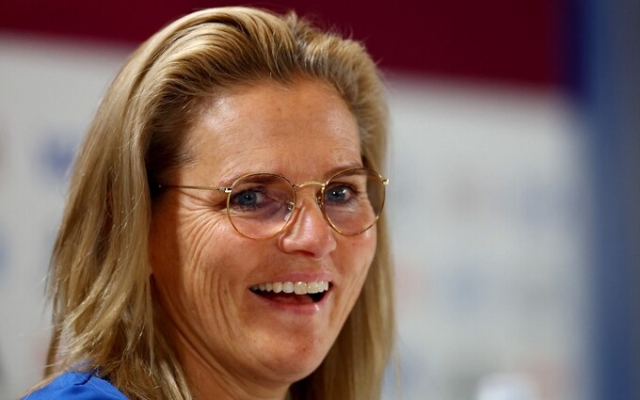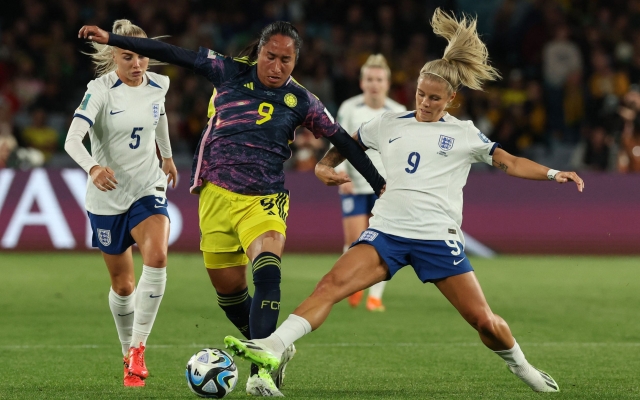 Sarina Wigman showed a pragmatic side to lead England to the World Cup final. Credit: Reuters/Carl Recine
Sarina Wigman showed a pragmatic side to lead England to the World Cup final. Credit: Reuters/Carl Recine
It borders on ridiculous to find fault with a manager who has reached the final of every major tournament she has trained in and led two different countries to the European Championship. However, if there was any criticism of Sarina Wigman, it was her stubborn refusal to change the team.
This is what made England's success in the World Cup final in Australia so outstanding. For the first time in her career, Wigman worked and changed. She doesn't stick to the plan. In fact, they tore it apart after just two games and developed a new one right in the midst of the biggest and most prestigious tournament.
England started this World Cup playing the standard 4-2-3-1 formation. Wigman even resisted the temptation, at the suggestion of her coaching staff, to even practice with 3-5-2. She wanted the team, which didn't have three key players last summer in the form of injured Fran Kirby, Leah Williamson and Beth Meade, to be coached relentlessly in a familiar style of play. She claimed that it was the «English way».
This is what made her switch to defense with three players, with five in midfield, including full-backs, and with a two-sided attack, which is so unexpected in this tournament. Not only that, Wigman also made a number of personnel changes, leaving the opposition to guess about her intentions.

England became too predictable for the opposition teams and too easy to negate. Her intellect must have noticed this, even if, as she later testified, it was her assistant Arjan Verink who convinced her to do so.
This is another strong indication of her brilliant qualities as a coach, person and tactician. This is yet another bowstring in the formidable arsenal of the best manager in women's football. Wigman was already world-class, now she looks like a genius.
At the 2017 European Championships, when she took charge of the Netherlands, Wigman changed her starting line-up three times during the tournament. – and it was mainly due to the fact that one of her defenders was sick, he needed to rest, and then return to the starting lineup.
At the 2019 World Cup with the same team, she contributed only two line-up changes as the Dutch reached the final where they lost to the USA.
England famously won the Euro at home by beating Germany 2-1 at Wembley last year, Wigman called one and the same starting lineup in every match, including the dead tire group match against Northern Ireland in Southampton.
As always with change, they were largely forced on Wigman. Keira Walsh's knee injury against Denmark, which at first seemed so bad that it ended her tournament, meant that England needed to adapt. They had to come up with a different plan.
However, before that, there were changes.
In the match against Haiti, Alex Greenwood was left-back, in the match against Denmark, she began to play as a central defender, replacing Jess Carter. Rachel Daly hit the flank of the left back. Lauren Hemp started on the right wing against Haiti but was replaced by Lauren James who scored the winning goal against the Danes.
 Rachel Daly's versatility epitomizes England's great tactical versatility in this tournament. Photo: Getty Images/Steve Christo
Rachel Daly's versatility epitomizes England's great tactical versatility in this tournament. Photo: Getty Images/Steve Christo
Wigman had been trying to come up with a new formula even before Walsh's injury. When the Barcelona star retired in the first half against Denmark, Wigman sent one of her most experienced players, Laura Coombs, to shore up the midfield.
But England weren't playing well and Wigman knew it . It was then that the plan was thwarted and launched again.
“In April, we tried to find ways to be unpredictable for the opponent. So we brought it up with a back three,» Wigman said.
«At that time there were [sic] a lot of wingers in the team and we were like, 'No, we're sticking to what we want.' . to do with the form'.
“Then, during the tournament, in the first two matches we struggled a bit. So after the second match, Aryan came up to me and said: «Isn't it time to go to 3-5-2?»
«I said:» You are absolutely right, this is the moment'. With the way the team is formed and the players available, we can get more out of them and their strengths in this form.”
World Cup Final: England vs. Spain
The new line-up was a huge success, defending the defense, keeping the Lionesses out of midfield and using marauding right-back Lucy Bronze as a cornerback. When Walsh was injured, Katy Zelem started unexpectedly and became one of the best players on the field in a 6-1 thrashing of China. Walsh came back in the next game against Nigeria, but Wigman went all the way.
New formation also created a dangerous and powerful strike force, with Hemp returning to the starting lineup along with Alessia Russo, who had previously misfired.
James was originally planned to pull the strings as number ten, but when James was removed from for punching, Ella Thun returned to the line-up to beat Colombia in the quarter-finals and scored an important first goal. in the semi-final victory over Australia.
Wigman again invites James to play in the final against Spain. It is expected to be used as a punch substitute, giving Wigman one of the weapons she used so well at the Euros. But it will also keep Spain guessing.
England is no longer predictable. Wigman was smart and brave, and England reaped the rewards.






















































Свежие комментарии